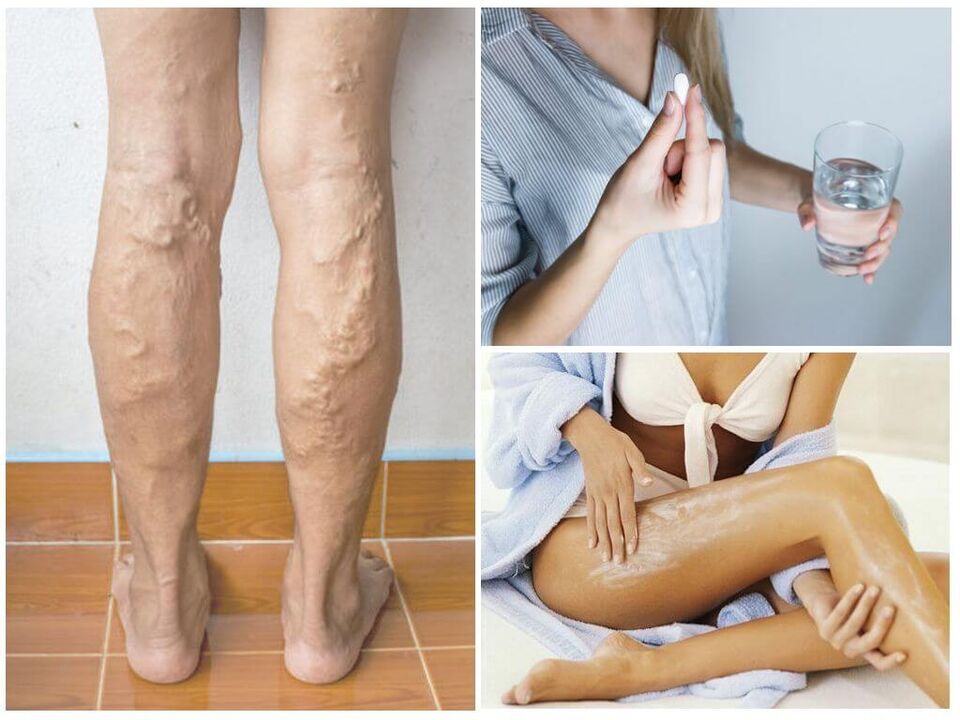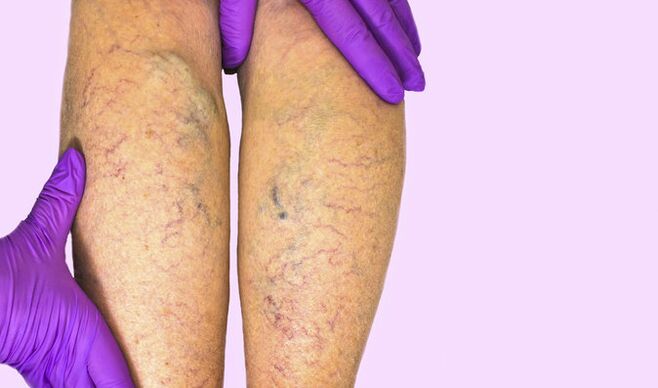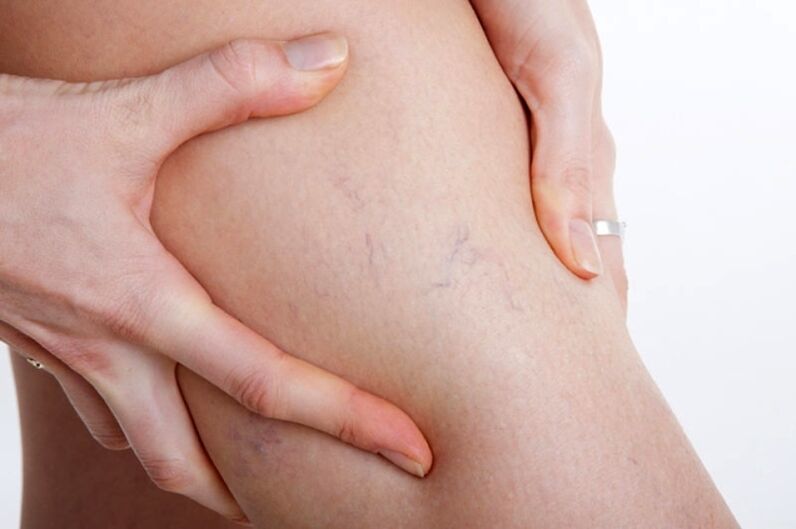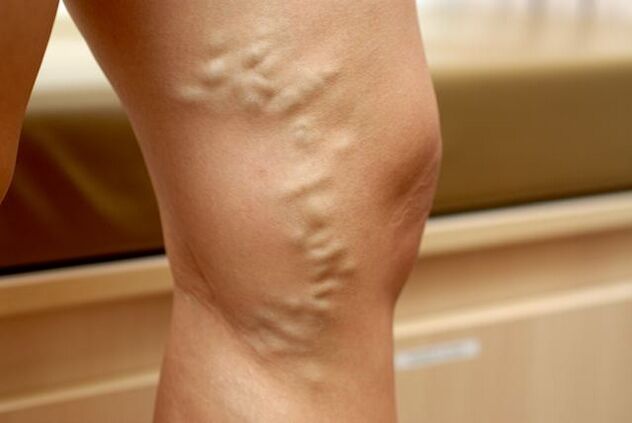
One of the oldest diseases of the vascular system is varicose veins in the legs. The disease most commonly occurs in women. The pathological process is based on the dilation of internal or deep veins, leading to an inflammatory process of the superficial venous network. As a result, blood flow and tissue nutrition are disturbed, leading to the most dangerous complication, trophic ulcers.
Pathological cause
The disease most often affects the veins of the lower extremities, as it is this part of the body that has the greatest load. Signs of varicose veins in women often appear during pregnancy.There are many reasons for the development of varicose vein symptoms in the legs:

- The genetic susceptibility to the development of varicose veins is due to the transfer of a special gene from parent to child, which is mutated and contributes to the formation of weak blood vessel walls.
- Hormonal imbalances in pregnant, breastfeeding, and menopausal women can negatively affect vascular status, leading to thrombosis and other pathological conditions.
- Severe obesity can lead to physical inactivity, impaired circulation, and increased intra-abdominal pressure. As a result, the outflow of venous blood is disturbed, leading to the development of varicose veins. Another factor is the violation of lipid metabolism and the deposition of harmful cholesterol on the walls of blood vessels.
- Type 1 diabetes adversely affects the state of the vascular system and ultimately leads to complications. The second is less dangerous to blood vessels and therefore rarely causes varicose veins.
- A sedentary lifestyle and strenuous physical work always lead to obstruction of venous return.
- Frequent abuse of alcohol, coffee, and strong tea can lead to dehydration, especially if small amounts of water are used at the same time. As a result, the blood thickens and blood clots form, causing blood vessel blockages and circulation disturbances.
- An unbalanced diet with insufficient vitamin C in the diet, which is responsible for the condition of the blood vessels and their strength.
- Congenital chronic blood abnormalities characterized by excessive formation of coagulation factors and thrombosis.
- Wearing tight clothing impedes venous return.
- Intermittent or chronic constipation. During exertion, intra-abdominal pressure increases, disrupting blood flow.
- Chronic lesions of the heart, negatively affecting the entire vascular system.
- Use drugs that increase blood clotting.

Another factor contributing to the symptoms of varicose veins in women is frequent wearing of high heels. It turns out that men get sick 2 times less often.
Symptoms and stages of development of the disease
Symptoms and treatment of varicose veins of the lower extremities depend on the stage of the pathological process. There are several stages in the development of the disease:

- in the initial stageLesions on the legs and feet with dark blue or purple spider veins. They do not disturb the patient and do not accentuate the surface of the skin.
- in the second stageSeveral thick veins appeared, hard and painful to the touch. Nodules are felt in the affected veins.
- The third phaseCharacterized by the appearance of numerous deformed veins above the level of the epidermis.
- in the fourth stageAt the affected veins, red or blue spots appear on the epidermis and it starts to itch. The itching is unbearable and the patient cannot control himself. Where the scratching occurs, a weeping, distressed surface appears.
- in the fifth or sixth stageThe spots coalesce, forming ulcers. Without treatment, the process of tissue necrosis begins, reaching bone in advanced cases.
In the initial stage, varicose veins may not be painful in the legs. Symptoms appear as the pathological process progresses.Common symptoms of the disease include:
- Feeling heavy in the legs by the end of the work day, even with the smallest movement.
- Swelling after physical exertion, disappears after lying down.
- Spasmodic muscle contractions at night.
- Excessive dryness, itching and burning of the epidermis of the calf.
- Increase fatigue.
In addition, the patient began to suffer from constant bending pain in the extremities. As a result, he avoided physical activity and spent a lot of time sitting in a sitting position. In advanced stages, when the trophic ulcer turns into a necrotic form, the patient's movement is very difficult as the pain becomes unbearable.
Possible Complications of Varicose Veins
Lack of treatment can lead to the development of varicose veins with serious consequences. Complications occurred in 30% of patients. Common complications are venous bleeding, thrombophlebitis, dermatitis, eczema, which are caused by impaired blood supply to tissues.
In most cases, trophic ulcers develop, which can significantly reduce the patient's quality of life. Incorrect and untimely treatment can cause tissue necrosis. In this case, surgical treatment refers to the removal of the necrotic foci.
Methods of Diagnosing Diseases
In the process of diagnosing a disease, it is important to determine what causes it. This will make treatment easier.

The first stage of the exam will be a test: place the patient on the couch, raise the leg perpendicular to the body and hold for 30 seconds to ensure blood is flowing from the veins in the lower extremity. After that, the limb is pulled to the thigh area with a special tourniquet and the patient is allowed to stand up. Typically, blood flow to the limb should continue for at least 15 seconds. If this period is short, an initial stage of varicose veins is suspected.
During venography, a special contrast medium is injected intravenously into the patient, and the patency of the deep veins is assessed on X-rays. To determine the patency of specific blood vessels, Doppler imaging is performed.
The most informative method is ultrasound angiography, which allows you to assess not only how well the dilated blood vessels are open, but also the extent of damage.
Based on the data from the diagnostic examination, the doctor develops a treatment plan, and each case is individual.
principles of conservative treatment
The initial stages of the pathological process are successfully treated in a conservative manner. To eliminate pathological symptoms, tablet preparations and external preparations in the form of gels and ointments are used.The most commonly prescribed drugs are:
- Tablets for varicose veins. They have anti-inflammatory, decongestant, analgesic, tonic properties, stimulate blood circulation, strengthen the walls of blood vessels, eliminate itching, burning and restore the elasticity of blood vessels. Some of these are in the form of ointments or gels.
- Topicals work like tablets. Effective in the early stages of the pathological process. Such funds are permitted in the absence of trophic ulcers.
- A mandatory step in treatment is taking anticoagulants, such as acetylsalicylic acid, which will help prevent further blood clots.
- NSAIDs are used to relieve pain later in the disease.
Early varicose veins can be successfully treated with laser photocoagulation. During the procedure, the affected blood vessel is exposed to a laser, which seals it off and prevents further development of the lesion. Most of the time, the procedure is done to remove cosmetic defects because the affected limb does not look attractive.
surgical intervention
Advanced cases of the disease are difficult to treat conservatively. When the pathological process has entered the trophic ulcer stage, the patient is provided with an operation that will fundamentally solve the problem.
Sclerotherapy refers to minimally invasive treatments that include the removal of lymph nodes. During the procedure, a special sclerosing agent is injected into the lumen of the vein, which helps it die gradually. Before introduction, vessels are removed from the general circulation by ligation and severing.
Phlebectomy is the complete removal of diseased blood vessels through a small incision or puncture. Do it to remove extensive lesions.
Usually, the recovery period is painless. For 2-4 weeks, the patient must wear compression underwear or wrap the affected limb with an elastic bandage.
Alternative Medicine Recipes
Folk remedies are very effective in the early stages of varicose veins. Most doctors favor a combination of conservative therapy and non-traditional prescriptions.The following are considered the most effective:
- Compressed chopped green tomatoes help relieve pain and swelling, normalize blood circulation, apply it to the affected area and fix it with a bandage overnight. Many people don't understand why green tomatoes are because they have fewer nutrients. But the secret to this product is its high lycopene content, which clears up clogging. Mushy ripe fruit is allowed.
- To enhance the effect of the drug, it is recommended to consume freshly squeezed vegetable juices of carrots and beets on a daily basis. Particularly valuable is celery leaf juice, which has a very positive effect on blood vessels.
- An effective remedy for pain relief is grated potatoes, which must be spread on the legs, left for 4 hours, and washed off. This process is repeated every day until the patient's condition is in remission.
- Prominent veins can be treated with a special dressing of 1 part minced garlic and 2 parts butter. The dressing is used at night for 2 weeks.
- Chestnut tincture helps relieve heaviness and pain in the legs. To prepare it, you need to take 200 grams of peeled fruit, grind and pour in a liter of alcohol, let it sit for 2 weeks to infuse. Use as a rub every night for 21 days. Take a 10-day break, then repeat the session.
- An effective remedy is chamomile oil. It is necessary to prepare from 150 g of crushed flowers and 500 ml of olive oil. After 10 days of infusion, the composition is ready for use. Sore limbs or compresses can be rubbed at night. Treat until remission.
Such funds must be used with the permission of a physician. You can avoid allergic manifestations by conducting an initial test for individual intolerance to a particular drug.
disease prevention measures
People who are prone to varicose veins need to take precautions. Comfortable shoes and loose-fitting clothing that does not obstruct venous outflow are recommended. You should stick to the principles of healthy eating, walking more, and quitting bad habits.
As a preventive measure, it is necessary to regularly take multivitamins that strengthen the walls of blood vessels.
At the first sign of varicose veins, you should immediately contact a specialist to prescribe the necessary treatment. This will help avoid serious complications.


















